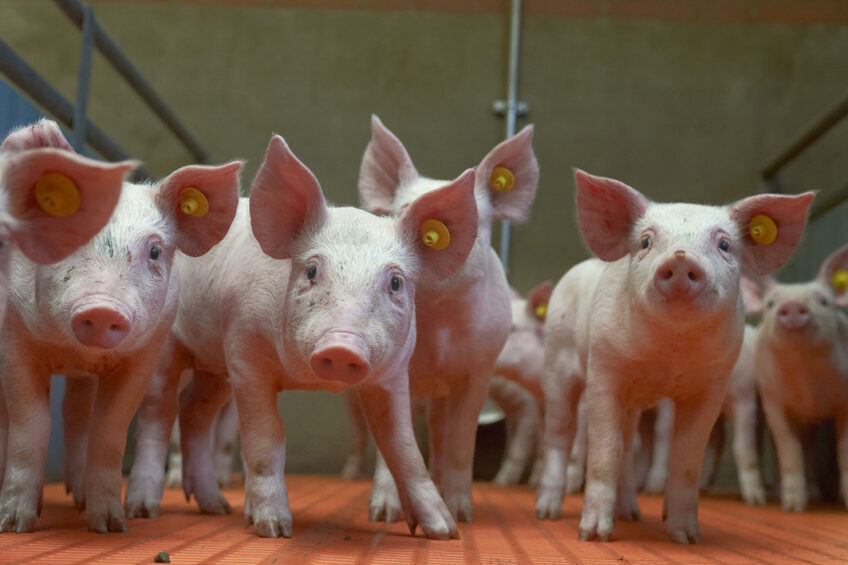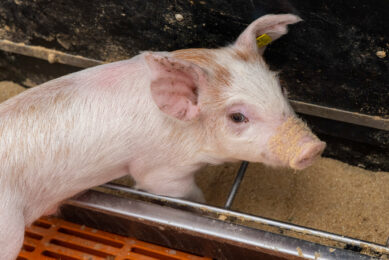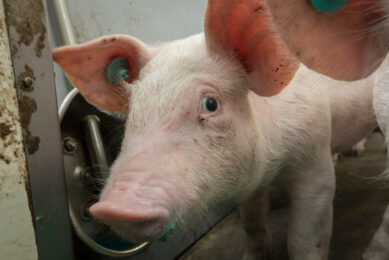Tips to lower piglet mortality

Piglet mortality has negative impacts on animal welfare and public acceptance. In addition, the number of weaned pigs per sow determines gross income of swine producers.
In recent years, piglet mortality rates have ranged from as low as 15% to as high as 20% on average. Piglet mortality is caused by a set of complex interactions between the sow, the piglet, and the environment; thus, it is often complicated to recognise a single cause. Piglet survivability is a key driver of overall system productivity and profitability. It is therefore required to find strategies to decrease pre-weaning and post-weaning mortality.
 Understand the natural behaviour of the sow
Understand the natural behaviour of the sow
Understanding sow natural behaviour around farrowing and the physiology of newborn piglets is essential to improve piglet survivability. Newborn piglets are unable to regulate their own body temperature and are highly susceptible to hypothermia. Therefore, piglets tend to use their mother as a source of radiation heat and lie close to her udder, which makes them more vulnerable to being crushed when the sow rises or lies down. In modern intensive production systems, 50% of pre-weaning mortality occurs within the first 3 days after farrowing due to low vitality and viability.
 Select for immunocompetence
Select for immunocompetence
Increased litter size is linked with lower birth weights, more complex diseases, and decreased survivability. Therefore, selection for immune traits associated with economically important production traits to gain a generally improved immune response is promising. However, it is required to have detailed knowledge of the genetic background of the immune system to have helpful insights about its possible incorporation into breeding program.
 Consider split suckling
Consider split suckling
As litter size increases, swine producers need to ensure that newborn piglets receive enough colostrum. Split suckling comprises of temporary separation of piglets who have consumed their quantity of colostrum from the mother within the first day, so they are not competing with piglets who still need to consume the needed quantity of colostrum. Split suckling is applied based on birth order or birth weight. In the birth order approach, the early-born piglets have access to the sow and then they are removed to make way for the later-born piglets. In the birth weight approach, the heavier-birthweight piglets are removed to give the light birthweights extra time to drink.
 Apply cross-fostering
Apply cross-fostering
The goal of cross-fostering is to equal out the number of piglets over several sows and to provide piglets with the best possible chance at survival. In this method, piglets are removed from their litter early in life. After that, they are established onto another sow within a new litter of similar size and greater access to milk supply. Piglets will remain on the new sow until weaning. Nevertheless, producers must ensure that piglets are not moved too early, missing out on colostrum, or too late which can detrimentally affect welfare and reduce growth rates.
 Manage piglet temperature
Manage piglet temperature
The first few hours after birth are critical to maintain piglets’ body temperature and to improve survival rates. Piglets with light birth weights have slower average daily gain and therefore, require extra heat after birth. It is recommended to use a room temperature of 25 degrees Celsius at the beginning of farrowing. After that, lower the temperature to 20 degrees Celsius after the last piglet of the litter is born. Application of heat in the first 12 hours post farrowing using radiant heat, underfloor heating, and drying piglets alongside using a heat lamp and straw in the farrowing area show promising effects to manage piglet temperature and to improve time to first suckle.
Concluding remarks
All the described measures are essential management tools to improve piglet survival rates. However, their implementation depends on real knowledge and stock skills applied during the farrowing period. Therefore, experienced, and well-trained stock people are critical to improve welfare, to reduce stress, and to avoid overhandling of piglets.











